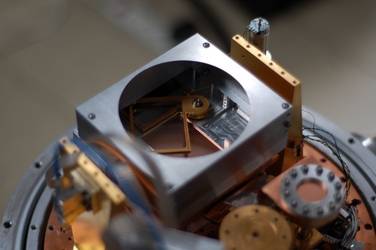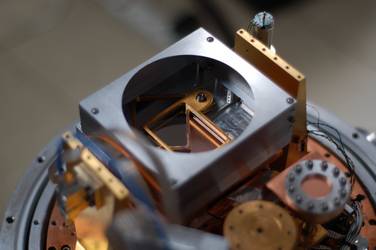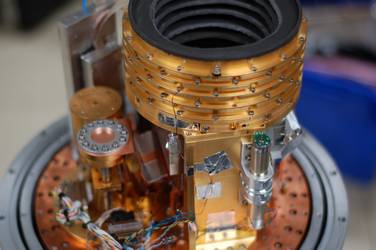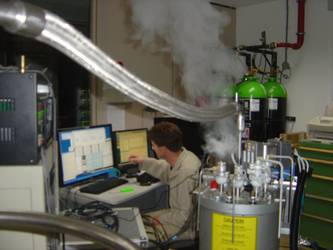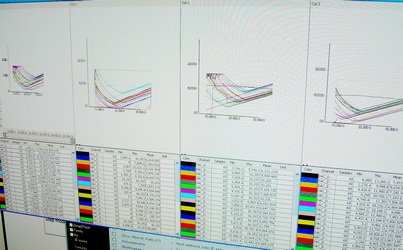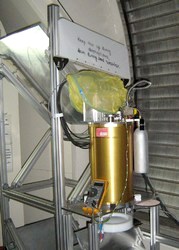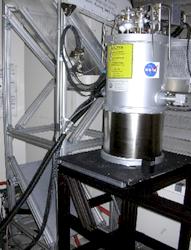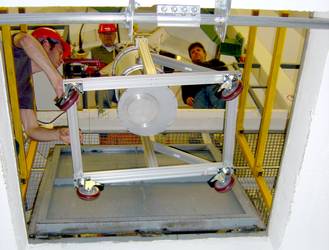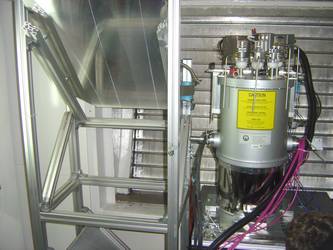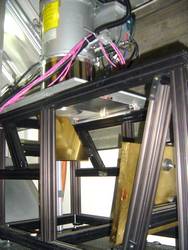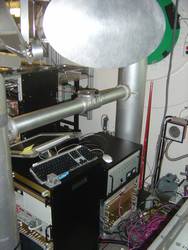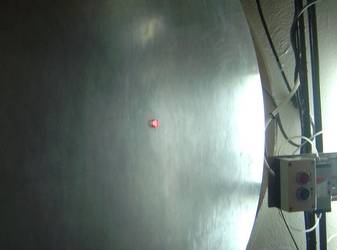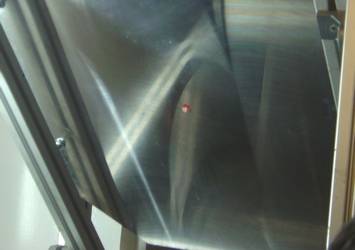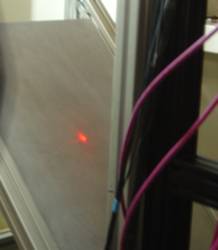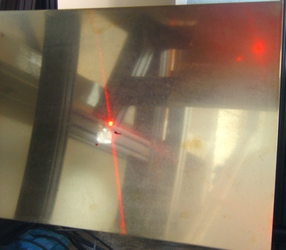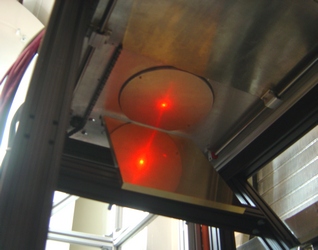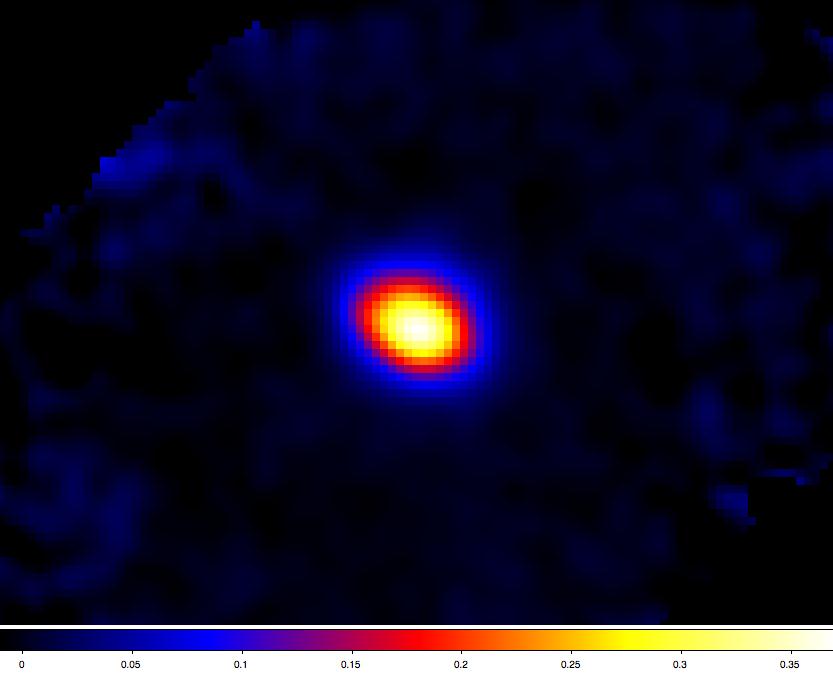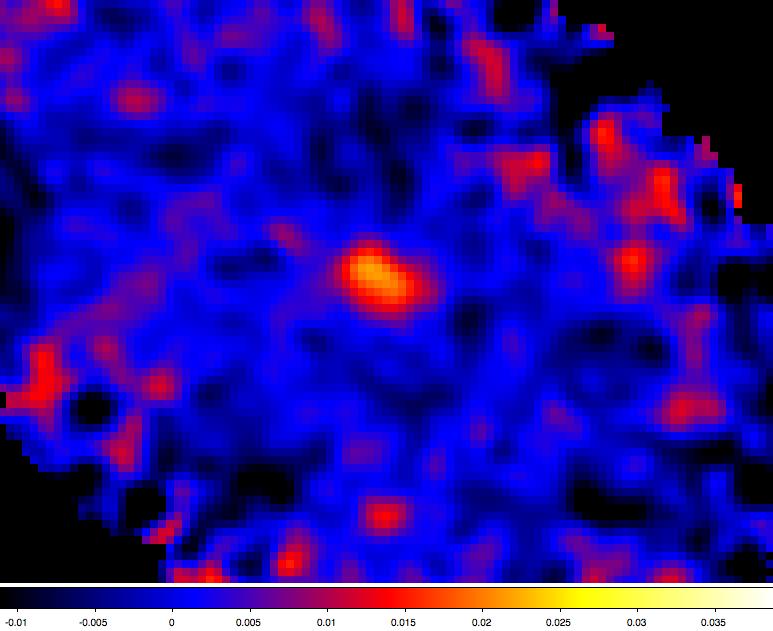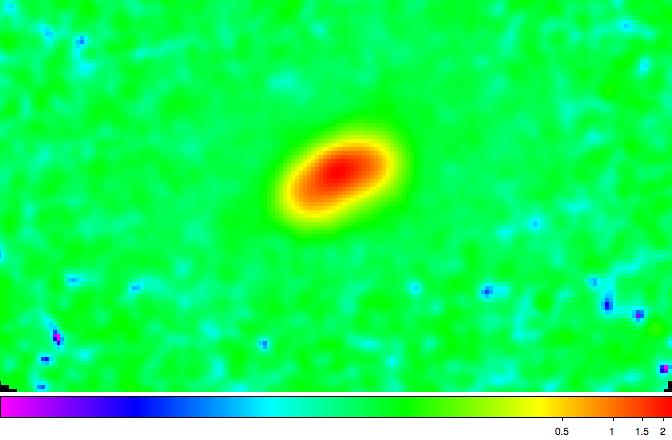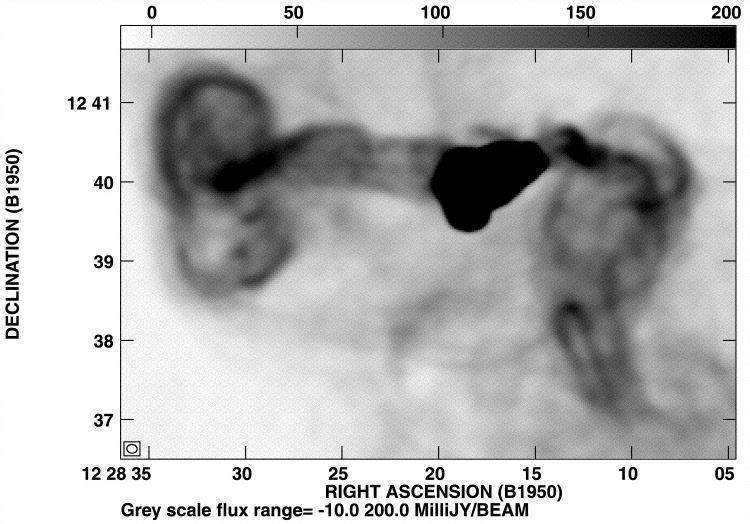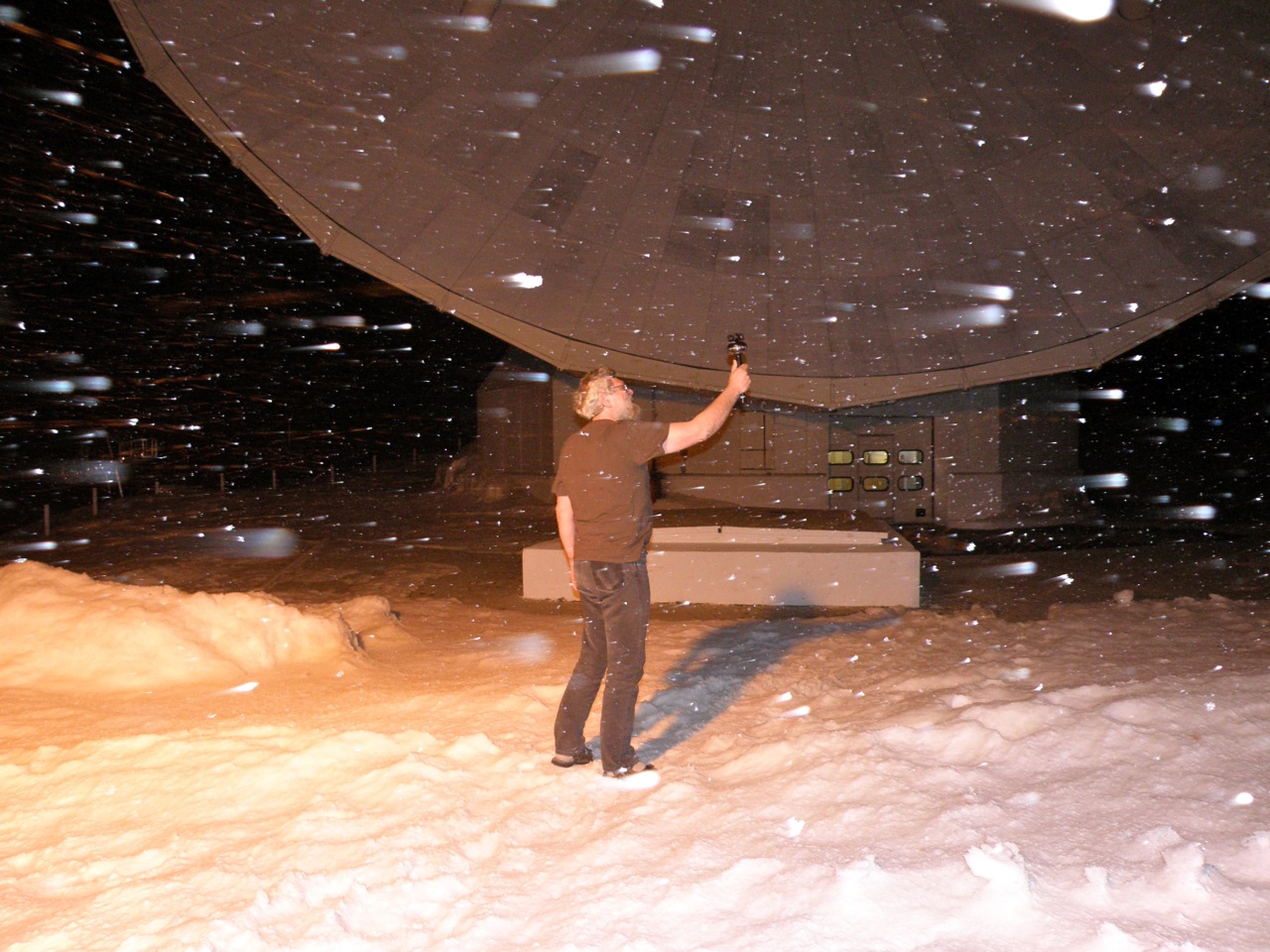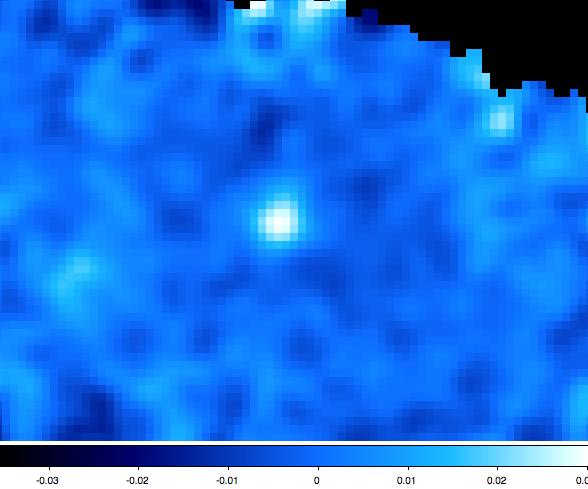GISMO run #3 (April 2010)
Staffing of the test run
- GSFC: J. Staguhn, D. Fixsen, A. Kovacs, S. Maher, E. Sharp, D. Benford
- IRAM: S. Leclercq, A. Sievers, G. Quintana-Lacaci, R. Zylka
Test run schedule: 31.03. - 16.04.2010
IRAM 30m schedule page: Schedule T16-09 in 30m schedule = GISMO has telescope time
Participants presence dates: Schedule_GISMO_visitors_April2010.pdf
# |
Dates |
Main Task |
Details |
Lead (GSFC/IRAM) |
Support |
|
31.03. Wednesday |
|
Arrival of ES, first GISMO visitor, in Granada |
|
|
|
01.04.-05.04. |
Mount upgrades, close and cool down in the 30m workshop |
Arrival of SM |
|
|
|
06.04. Tuesday |
Turn on GISMO, and 1st tests in the 30m workshop |
Arrival of JS, DF, AK, SL, AS. |
Johannes / Samuel |
Albrecht (AoD) |
|
07.04.-08.04. |
Tests in the 30m workshop |
Bias, Tuning, IV curves, internal LED, Computer... |
Johannes / Samuel |
Albrecht (AoD) |
|
09.04. Friday |
Installation in the cabin, cool down, alignment, background noise |
Arrival of RZ |
Johannes / Samuel |
Albrecht & Guillermo (AoD) |
|
10.04.-12.04. |
Calibration on sky (alignment, pointing, focus, dips), observations T16-09 |
12.04.: Arrival of DB, departure of AS, SL, RZ |
Johannes / Samuel |
Guillermo (AoD) |
|
13.04.-15.04 |
Observations T16-09 |
|
Johannes |
Guillermo (AoD) |
|
16.04. Friday |
Dismounting |
Departure of everybody |
Johannes |
Guillermo (AoD) |
Compilation of the lists of sources that will possibly be observed (include few references to past runs): GISMOtestrun3_sources.pdf.
Comments from Johannes about the proposed science grade sources: IRAM_Proposed_Sources_Comments.pdf
GISMO upgrades compared to previous runs
- 2 motorized neutral density filters allowing to compensate the restrained dynamic range of GISMO by reducing the optical transmission in case of poor weather conditions, their transmissions are 65% and 40% respectively.
- A controllable shutter and a LED coupled to detectors through a fiber allowing to make optical internal calibration
- Automated observing procedures usable via a dedicated GUI such as detector tunning, sky dips, I-V measurements for total power measurements
A reduction package (CRUSH) allowing near-to-real-time data processing
An observer's manual of the GISMO operating software: GISMO_Software_Operational_Manual.pdf
Daily reports
31.03. - 05.04.
Arrival of Elmer & Stephen. Mount GISMO in the 30m workshop. The pictures below show several elements of the optical stage of GISMO: the 4K motors controlling the neutral density filters, the neutral density filters in motion, the baffle with the NDF motors and the 3He sorption cooler, and a general view of GISMO mounted.
Start cooling down on Monday the 05.04.
06.04. - 08.04.
Arrival of Johannes, Dale, Attila, and Samuel. GISMO is cold. Turn on the instrument, BIAS the SQUIDs, monitor the TESs responses, take IV curves: all 4 quadrants are working, about ~20 non-responsive pixels (mostly due to SQUID issues in the MUX). LED illumination not visible in the real time data, but appears finely in reduced curves. Problems of strange wiggles in the IV curves. Install the GISMO frame in the cabin, but keep everything else (GISMO & electronics) in the workshop.
Find next morning that the problem with the IV curves was surely due to CPU overheating. A new power supply (with large fan) was installed and an external heat source (another computer) was removed. Subsequently things looks fine, frequency plots show 1/f^2 noise certainly due to thermal oscillations.
We noted that the bars holding M5 are below it and wondered whether this position would block partially the FOV and whether they weren't above M5 in the past, in particular for previous runs. As the pictures show below they were already below M5 when MAMBO was reinstalled in December 2007 after the 1st GISMO run, and they were also in this position during the 2nd GISMO run in 2008:
|
So the bars supporting M5 have probably always been in that position and are not an issue concerning the FOV.
09.04. Friday
Start moving GISMO in the 30m receiver cabin in the morning. Perform the laser alignment.
A temperature jump occurred during the installation. The detectors reached their base temperature near diner time. IV curves with the cryostat shutter closed showed more than 100 bolometers respond with nice superconducting transitions. But once the shutter was open all the TESs saturated and couldn't reach the superconducting transition: impossible to align on the sky. Telescope shutter was closed... Redo all the alignment procedure. But saturation problem still there.
Numerous procedures tried to diagnose the problem an fix it. The only way to get and optical alignment on the sky was to install a metallic disc with a small aperture (few cm in diameter) in front of the cryostat window. The most probable explanation is a broken filter in the cryostat. Once all the hypothesis and tests we could imagine were conducted the decision is taken near 5am to warm up the cryostat.
10.04. - 11.04.
The 30m is used by a backup project. The cryostat reached room temperature in the evening, and was dismantled. No problem seen on the filters. Main hypothesis explaining the saturation at cold temperature when the window is open to the sky: some stray-lights can bounce at angles steep enough to be badly attenuated by the filters, but not too much so that they pass the baffle without touching its wall, then they bounce with many reflections in the Neutral Density filters box and are eventually absorbed by the TESs, deposing enough energy to saturate them. Hence it was decided to remove the ND box and replace it by the cylindrical spacer used in GISMO run #2. GISMO was remounted then pumped during the night, and the cool down started early Sunday morning. Base temperature expected Sunday after diner.
|
12.04. Monday
Problem of noise in 3 MUX lines during the Sunday night. Battery box replaced with an AC power supply => OK. 1st planet and 1st Quasar on Monday morning.
13.04. Tuesday
Elmer has left and Dominic has arrived. The observing started late after a careful but ultimately unsatisfying alignment that had been entered into to fix a point source coupling problem. The point source coupling had been measured by Attila using a sky noise correlation vs. source strength correlation, and showed that there was some slope across the array indicative of spilling off the secondary. After realignment, Venus appeared nicely and could be focused well. Unfortunately, the point source coupling was not obviously any better. Careful focusing and re-alignment on Mars resulted in a very good cold sky, but again no better point source coupling. Pointing again on Saturn (a few hours later) resulted again in good cold sky and more uniform illumination of M7. The lesson being learned is that optical alignment of a large field of view instrument is a nontrivial exercise; chief ray pointing solutions are not sufficient for this kind of instrument.
However, the weather was decent and we decided to conduct a few science observations that would produce good results.
M82 appeared as a bright, Jy-level resolved source. IC342 was weakly detected at about 20mJy, and is slightly extended. M87 is clearly detected in its core (S/N of around 500), but none of the filamentary structure seen in the 90cm maps was evident at the ~1% level.
14.04. Wednesday
Wednesday was almost completely shut out due to snow and high winds. As a demonstration of both, Dale went outside with the anemometer wearing only a light shirt.
We took a nearly-complete map (larger than requested) of the DR21 region, and were able to detect the T Tauri disk around GM Aur:
We worked on processing data. Further improvements include a better pixel position map and a multiparameter pointing fit that appears to reduce pointing errors to <5 arcsec. Here's a skydip fit (from very unstable weather at high tau): 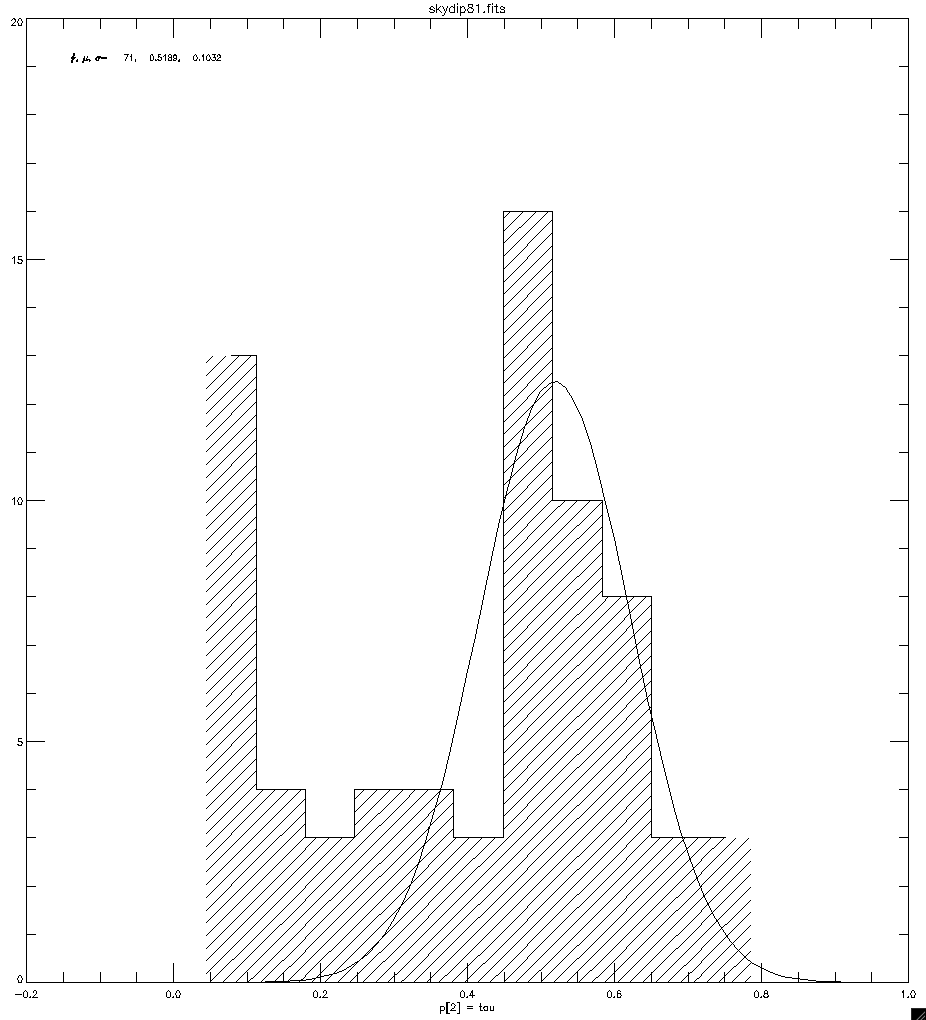
Some representative data using the LED/shutter calibration have been taken, and we do see the system behaving as expected. Software to process this data automatically is in the works, but I'm too tired to finish it now. We have had a number of non-GISMO-related things to deal with today, such as soft transfer tubes, a power failure taking out computers, and some non-responsive telescope data. However, the cryostat is cold again, the data system is better than ever, and we'll be ready to take advantage of what is predicted to be a few more hours of good weather tonight! We're all going to take a long rest so as to be able to work intensively during the final 24 hours.
We also had a good fox sighting at dinner and took a panoramic photo of the snowy conditions during a brief sunny moment.
15.04. Thursday


